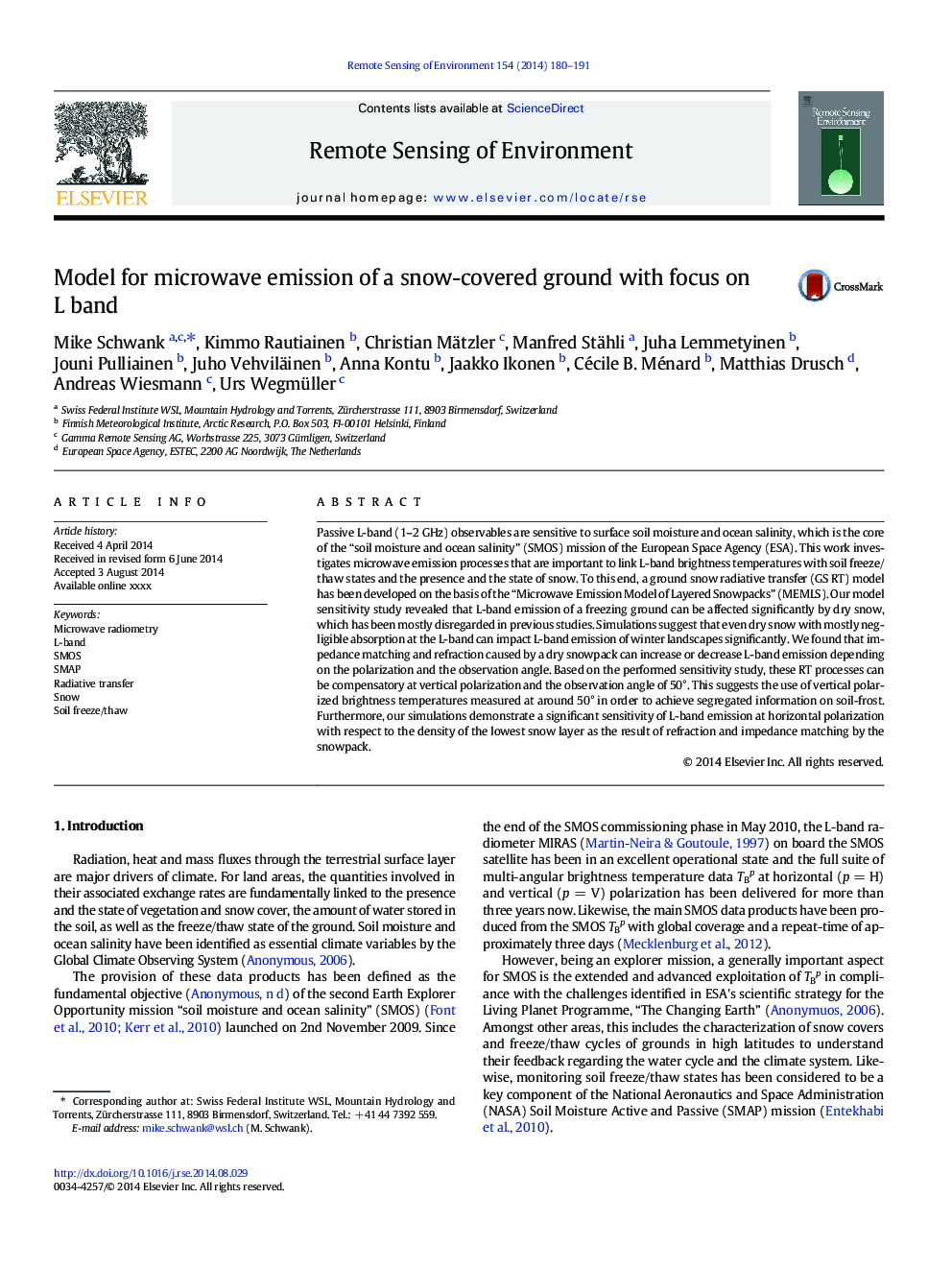| Article ID | Journal | Published Year | Pages | File Type |
|---|---|---|---|---|
| 6346429 | Remote Sensing of Environment | 2014 | 12 Pages |
Abstract
Passive L-band (1-2 GHz) observables are sensitive to surface soil moisture and ocean salinity, which is the core of the “soil moisture and ocean salinity” (SMOS) mission of the European Space Agency (ESA). This work investigates microwave emission processes that are important to link L-band brightness temperatures with soil freeze/thaw states and the presence and the state of snow. To this end, a ground snow radiative transfer (GS RT) model has been developed on the basis of the “Microwave Emission Model of Layered Snowpacks” (MEMLS). Our model sensitivity study revealed that L-band emission of a freezing ground can be affected significantly by dry snow, which has been mostly disregarded in previous studies. Simulations suggest that even dry snow with mostly negligible absorption at the L-band can impact L-band emission of winter landscapes significantly. We found that impedance matching and refraction caused by a dry snowpack can increase or decrease L-band emission depending on the polarization and the observation angle. Based on the performed sensitivity study, these RT processes can be compensatory at vertical polarization and the observation angle of 50°. This suggests the use of vertical polarized brightness temperatures measured at around 50° in order to achieve segregated information on soil-frost. Furthermore, our simulations demonstrate a significant sensitivity of L-band emission at horizontal polarization with respect to the density of the lowest snow layer as the result of refraction and impedance matching by the snowpack.
Related Topics
Physical Sciences and Engineering
Earth and Planetary Sciences
Computers in Earth Sciences
Authors
Mike Schwank, Kimmo Rautiainen, Christian Mätzler, Manfred Stähli, Juha Lemmetyinen, Jouni Pulliainen, Juho Vehviläinen, Anna Kontu, Jaakko Ikonen, Cécile B. Ménard, Matthias Drusch, Andreas Wiesmann, Urs Wegmüller,
